Heritage status Registered (ID 15956) Longest span 36.6 metres (120 ft) Total length 191 m | Opened 6 December 1886 | |
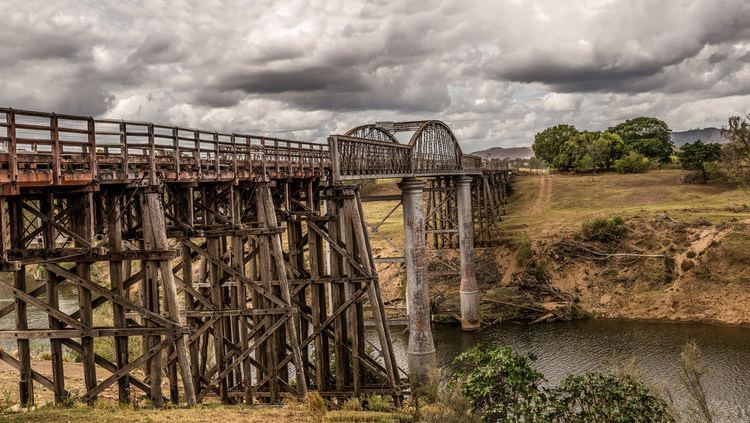 | ||
Carries Motor vehicles, Railway Similar Amamoor Forest Reserve, Mary River, Cruice Park, Bjelke‑Petersen Dam, Teewah Beach | ||
Historische dickabram bridge australia
Dickabram Bridge is a heritage-listed road-and-rail bridge over the Mary River between Miva and Theebine, both in the Gympie Region, Queensland, Australia. It was the major bridge on the Kingaroy railway line. It was designed by Henry Charles Stanley and built from 1885 to 1886 by Owen McDermott & Co. It is also known as Mary River Bridge (Miva). The bridge was registered on the former Register of the National Estate in 1988. It was added to the Queensland Heritage Register on 21 October 1992.
Contents
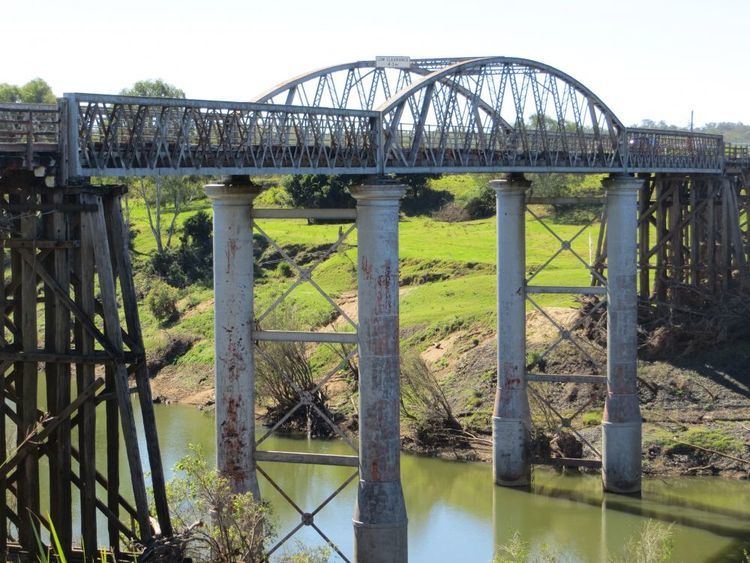
The bridge is one of only two remaining road-and-rail bridges in Australia and the only one in Queensland. It is the oldest remaining large steel truss bridge constructed in Queensland.
History
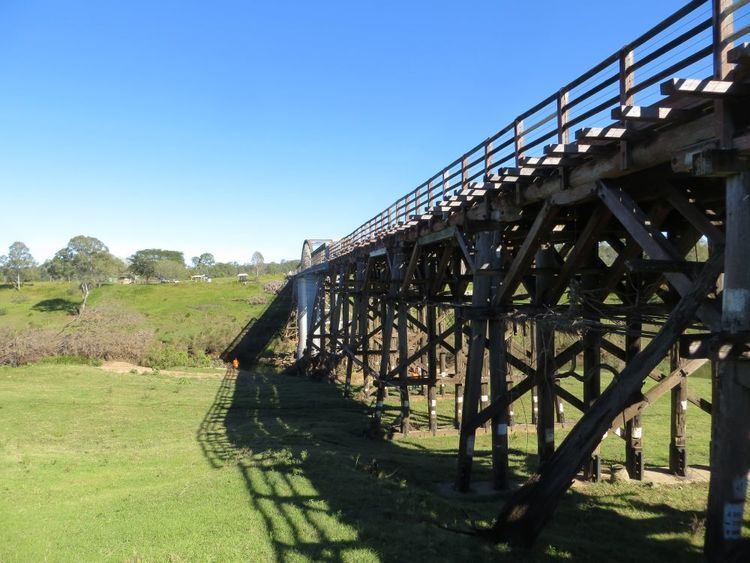
The Dickabram Bridge over the Mary River was the major bridge on the Kingaroy branch railway line. The contract for construction of the line to Kilkivan was awarded to McDermott Owen & Co in August 1884. Work was delayed in 1885 awaiting casting of the cylindrical piers for the central spans. The bridge was tested in November 1886 with a two-engine train. The line opened for traffic between Dickabram and Kilkivan on 6 December 1886.
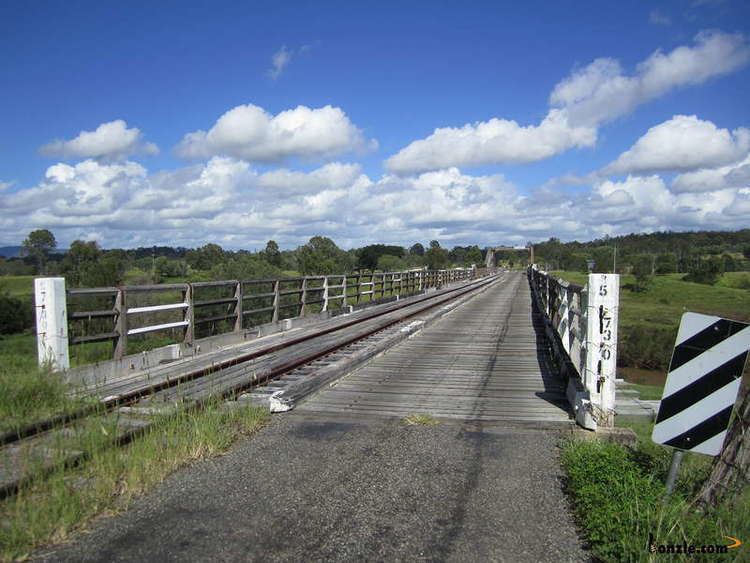
The original road bridge across the Mary River at Miva had opened on 30 October 1878. This bridge was damaged by floods in July 1879 and swept away by floods in February 1880. A replacement road bridge was swept away by floods in October 1882.
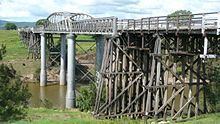
It was provided in December 1882 that the proposed rail bridge be built to carry road traffic as well. Because of the delay in opening access roads it was March 1889 before it opened to road traffic.
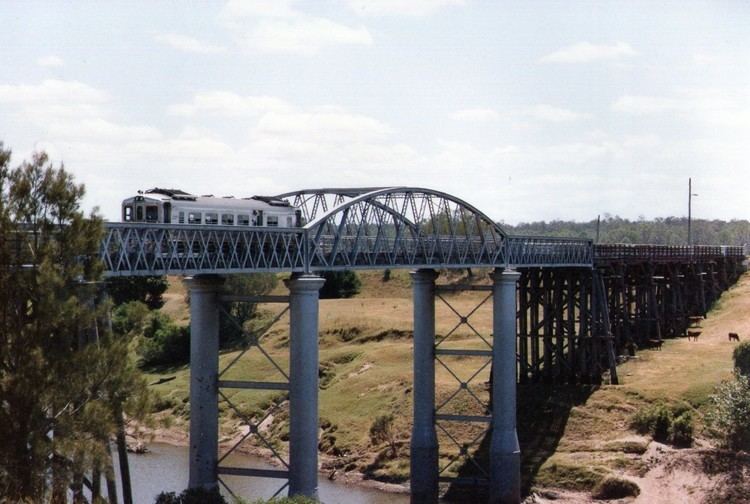
The steel and timber truss bridge, built by McDermott Owen & Co., was completed in November 1886 and the line opened for traffic between Dickabram and Kilkivan on 6 December 1886.
The name of the bridge comes from a local Aboriginal word dickabram meaning sweet potato that grew along the river flats there. The bridge decking was submerged under water only once during the 1893 floods.
The bridge has remained in use without substantial modification. Work since its completion includes undertrussing a 36-foot span in 1911, strengthening the 26- and 36-foot spans for C17 locomotives in 1935, a concrete base for pier 9 in 1968, and scour protection in 1976. Work strengthening the line from PB15 to C17 standard was completed between 1933 and 1935. Diesel electric locomotives were first permitted in 1977. The decking has been modified by adding a kerb in the 1970s–80s to separate road and rail traffic to save the need for a gatekeeper to control road traffic.
The extensive restoration of the bridge, involving replacement of hardwood timber beams and decking, was completed in April 2009.
Description
The Dickabram Bridge over the Mary River is 191m long and stands 23m above the Mary River. All spans are metal trusses except for the 11m approach spans which are tied timber girders. The two river piers are cast iron cylinders; the remaining piers and road deck are timber. It comprises two 80 foot parallel chord lattice girder spans either side of a 120 foot hogback lattice girder span, having steel cross girders, supported on two cylinder piers and two double timber piers.
Heritage listing
Dickabram Bridge was listed on the Queensland Heritage Register on 21 October 1992 having satisfied the following criteria.
The place is important in demonstrating the evolution or pattern of Queensland's history.
The bridge is a late 19th century and essentially unmodified high level road-rail bridge with half-through double by 2 lattice girder approach spans and hogback through double x 2 lattice girder main spans. It was constructed on the site of several low-level bridges that had been destroyed by floods.
The place demonstrates rare, uncommon or endangered aspects of Queensland's cultural heritage.
It is one of the few extant road-rail bridges in Queensland.
The place is important in demonstrating a high degree of creative or technical achievement at a particular period.
It is the oldest extant of its type in Queensland with the longest hogback span of its type in Queensland.
The place has a special association with the life or work of a particular person, group or organisation of importance in Queensland's history.
Its design was associated with the Chief Engineer, Henry C. Stanley.
